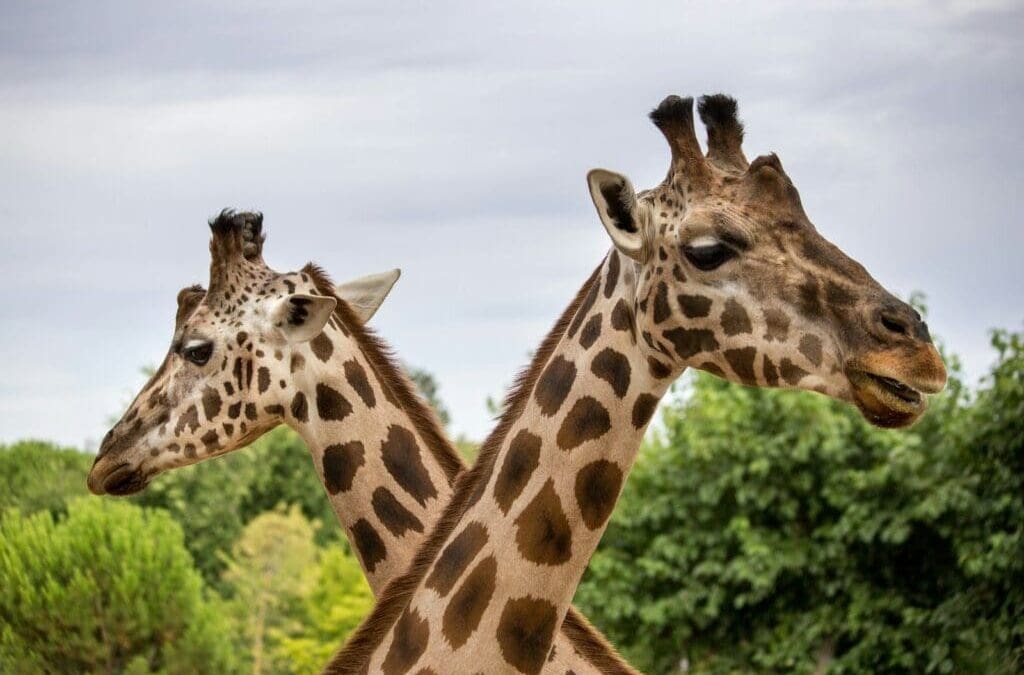
Virtual Reality in Zoos
Photo by Jessica Lewis 🦋 thepaintedsquare on Unsplash
A New Frontier for Immersive Wildlife Encounters
Virtual reality, commonly referred to as VR, is revolutionizing the way visitors interact with zoos and aquariums globally. This technology offers an immersive experience that transports guests into the wild habitats of animals, right from the safety and comfort of the zoo environment. By donning a VR headset, individuals can come face-to-face with wildlife, engaging in educational content that heightens their understanding of different species and ecosystems. Zoos are increasingly turning to this innovative tool not just for the novelty, but for its potential in wildlife education and conservation efforts.
Incorporating VR into zoo exhibits allows guests to observe animals in a simulated natural setting, creating a connection that goes beyond glass enclosures and distant views. This connection is vital for inspiring a sense of responsibility towards the environment and the creatures that inhabit it. Furthermore, virtual reality provides a platform for zoos to address conservation messages powerfully, ensuring that visitors leave with a deeper awareness of the natural world and the challenges it faces.
As technology advances, so too does the capacity for zoos to offer these unique digital encounters. Visitors are now able to embark on virtual safaris, swim alongside marine creatures, or witness the behaviors of animals in remote areas, all without impacting the natural behavior of the animals observed. This intersection of technology, education, and entertainment is forming a new frontier for how the public engages with zoos, paving the way for a future where both wildlife and people benefit from the wonders of virtual exploration.
Implementing Virtual Reality in Zoos
With an aim to revolutionize visitor experiences, zoos are increasingly implementing virtual reality (VR) technologies. These efforts not only bolster visitor engagement but also serve educational purposes, blending entertainment with learning in immersive settings.
Technological Advances and Zoos
Advancements in VR technology have enabled zoos to create interactive environments that were once unimaginable. From species-specific habitats that visitors can ‘step’ into, to offering a first-person perspective of the animal world, technology is transforming how people connect with wildlife. Pioneers like Immotion Group are at the forefront, crafting VR experiences that complement zoo exhibits.
Benefits of VR for Educational Outcomes
Virtual reality offers dynamic ways to enhance learning in zoos. By leveraging immersive experiences, visitors can gain in-depth knowledge about animals, their behaviors, and conservation challenges. A case study has shown that VR can contribute to encouraging positive visitor behaviors towards zoo-housed animals, highlighting its potential as an educational tool (A Case Study Exploring the Use of Virtual Reality in the Zoo Context).
Collaborations and Innovators
The success of virtual reality in zoos is often the fruit of strategic partnerships. Collaborations between technology providers and zoos combine expertise in animal care with innovation in VR. These alliances pave the way for projects like the augmented reality (AR) experiences, which blend physical and virtual worlds, and explore the possibilities brought forth by the internet of things (IoT) to create enriched, educational content.
Educational Impact of Virtual Experiences
Virtual Reality (VR) offers innovative avenues for enriching educational experiences in zoos, blending immersive entertainment with impactful learning outcomes. Through these high-tech interactions, visitors, ranging from elementary school students to adults, can deepen their understanding of wildlife and conservation.
Visitor Learning and Engagement
VR technology in zoos has revolutionized the way visitors engage with and learn about animals. By providing an immersive environment, VR can simulate natural habitats and animal behaviors, leading to a dynamic form of public education. Visitors are more likely to retain information and gain a deeper appreciation for biodiversity, often reporting that the educational experience is as entertaining as it is informative—what industry professionals refer to as “edutainment”.
VR in Zoo Education Programs
The integration of VR into zoo education programs provides a unique opportunity for tailored educational content. For example, VR experiences designed for elementary school students can align with curricular standards, enhancing their learning journey in a compelling format. Similarly, medical students might use VR to study veterinary practices in a controlled, yet lifelike environment, bridging the gap between theory and practical application.
Case Studies and Visitor Studies
Several case studies have pointed out the benefits of VR in zoo settings. Adults have particularly highlighted the entertainment value of VR, while also emphasizing its educational potential. Moreover, visitor studies suggest that these virtual experiences can significantly enhance zoo visitor learning, making a visit to the zoo an engaging and informative outing.
Wildlife Conservation and Animal Welfare
In the intersection of technology and zoology, Virtual Reality (VR) is emerging as a pivotal tool for wildlife conservation and animal welfare. By simulating natural environments and animal encounters, VR has the potential to foster a deeper understanding and commitment to conservation efforts, all while prioritizing the well-being of the animals.
Virtual Encounters and Conservation Awareness
Virtual Encounters: VR introduces zoo visitors to a unique way of experiencing wildlife. By using technology, individuals have the chance to immerse themselves in virtual habitats, gaining an appreciation for the natural habitat and challenges that wild animals face. This immersive experience has been shown to positively influence conservation behaviors, according to a study in Scientific Reports. It provides a compelling narrative for why conservation actions are crucial, especially for endangered species.
Awareness to Action: Visitors may be encouraged to support conservation programs, having seen the impact of issues like climate change first-hand in the virtual world.
Enhancing Animal Welfare with VR
Reduction in Stress: With VR, there’s less need for real animals to participate in animal-visitor interactions, which can decrease stress and improve overall animal welfare.
Policy Implications: This shift has implications for policies on the care and presentation of zoo animals, as public concern for animal welfare is paralleled by a growing expectation for high standards of care in all wildlife preservation ventures.
Educational Opportunities: Educators can utilize VR to explain complex conservation concerns without subjecting animals to potential stress or the need to leave their well-catered enclosures. This approach aligns with the essence of wildlife conservation—keeping wild things wild while educating the public.
Visitor Experience and Immersion
The integration of Virtual Reality (VR) in zoos has revolutionized visitor experiences, transforming simple viewings into engaging interactions with the natural world and enhancing personal exploration through immersive technologies.
Virtual Tours and Animal Interactions
Virtual tours have emerged as a powerful tool for zoos to offer a one-of-a-kind experience that allows visitors to garner a closer connection to nature without the constraints of traditional zoo environments. Visitors can now engulf themselves in audio and visual stimuli that simulate real-world encounters, such as diving with sharks or swimming with humpbacks. For example, at OdySea Aquarium, under the guidance of Greg Charbeneau, guests can experience what it’s like to move and swim like a great hammerhead shark through a specialized VR experience.
Virtual interactions extend beyond mere visual spectacles; they invite guests to interact with the environment—feeding little penguins or participating in a shark dive, all within the safety and comfort of VR headsets. This blend of entertainment and education serves not only to capture the attention of visitors but also to foster positive attitudes toward wildlife conservation, stressing the pivotal role of modern zoos in the facilitation of these captivating experiences.
The Role of Immersion in Visitor Satisfaction
Immersion plays a critical role in shaping visitor satisfaction, as it provides a more profound exploration of the natural world. By wearing a VR headset, guests are transported beyond the boundaries of Texas’s zoo enclosures into habitations that span global ecosystems. These encompassing experiences are designed to spark the imagination and deepen the bond between humans and animals.
Surveys conducted by the Association of Zoos and Aquariums reveal that immersive experiences elicit more profound emotional responses and memorable impressions, which are key drivers in shaping a visitor’s overall contentment. Moreover, the incorporation of VR into zoo’s business models represents a step forward in evolving with visitor’s expectations, ensuring their experiences remain contemporary, educational, and enthusing, like signing in to a whole new world of interactive exploration.




